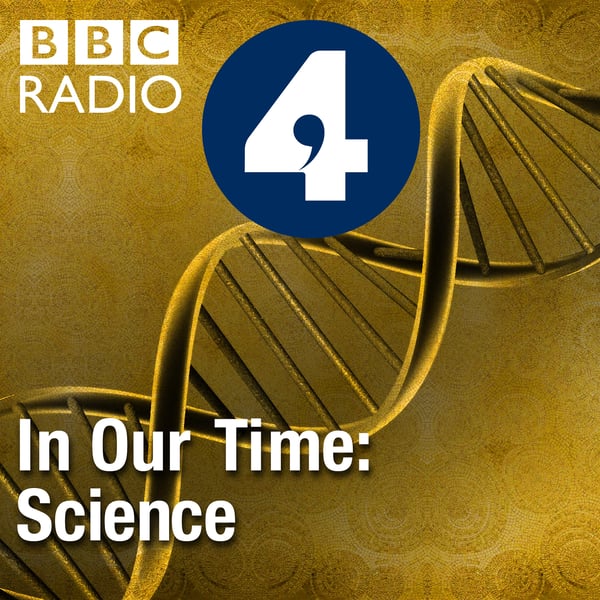The Graviton
In Our Time: Science
BBC
4.5 • 1.4K Ratings
🗓️ 24 November 2005
⏱️ 42 minutes
🧾️ Download transcript
Summary
Transcript
Click on a timestamp to play from that location
| 0:00.0 | Thanks for downloading the In Our Time podcast. |
| 0:02.2 | For more details about In Our Time and for our terms of use, please go to BBC.co. |
| 0:07.1 | UK forward slash Radio 4. |
| 0:09.4 | I hope you enjoy the program. |
| 0:11.7 | Hello, Albert Einstein said, I know why there are so many people who love chopping wood. |
| 0:16.8 | In this activity, one immediately sees the results. |
| 0:19.9 | Einstein spent the last 30 years of his life trying to find a theory that will unify |
| 0:24.0 | electromagnetism with gravity, but results eluded him. |
| 0:28.3 | The search is still on for a unifying theory of gravitational force and hopes are pinned on the location of the graviton, a hypothetical |
| 0:34.9 | elementary particle that transmits the force of gravity. But the graviton is proving hard to find. |
| 0:40.0 | Indeed, the next big research project which involves the largest earth-based laboratory in the world, |
| 0:45.2 | a circular ring which goes underground for about 27 kilometers and span Switzerland, France and Germany, |
| 0:50.3 | still won't allow us to detect gravitons per se, but might be able to prove their existence in other ways. |
| 0:56.0 | So why is the search for the graviton the major goal of theoretical physics? |
| 1:00.0 | How will the measurement of graviton waves help prove its existence? |
| 1:03.8 | And how might the graviton unite the seemingly incompatible theories of general |
| 1:07.4 | relativity and quantum mechanics? |
| 1:09.6 | With me to discuss the graviton, a Roger Cashmore, former director at Cern and principal of |
| 1:14.2 | Brasnose College Oxford, Jim Alkaleini, professor of physics at the University of |
| 1:18.5 | Surrey, and Sheila Rowan, reader in physics in the Department of Physics and |
| 1:22.1 | Astronomy at the University of Glasgow. |
| 1:24.3 | Roger Kashmore, a graviton is a hypothetical elementary particle that we think mediates |
... |
Please login to see the full transcript.
Disclaimer: The podcast and artwork embedded on this page are from BBC, and are the property of its owner and not affiliated with or endorsed by Tapesearch.
Generated transcripts are the property of BBC and are distributed freely under the Fair Use doctrine. Transcripts generated by Tapesearch are not guaranteed to be accurate.
Copyright © Tapesearch 2025.

